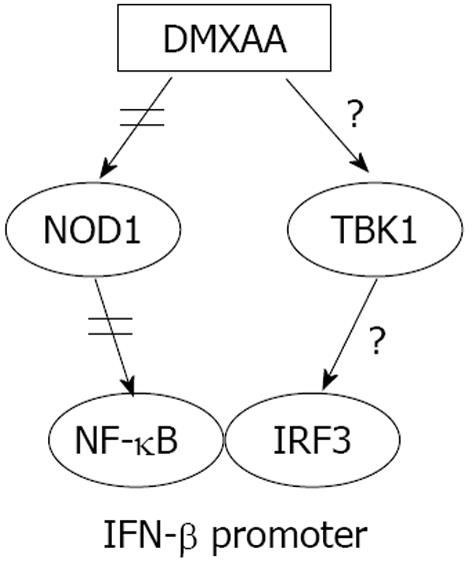Copyright
©2013 Baishideng Publishing Group Co.
World J Biol Chem. May 26, 2013; 4(2): 18-29
Published online May 26, 2013. doi: 10.4331/wjbc.v4.i2.18
Published online May 26, 2013. doi: 10.4331/wjbc.v4.i2.18
Figure 7 Schematic model of probable pathway of refractoriness of interferon-β signal.
Previous works have shown that 5,6-dimethylxanthenone-4-acetic acid (DMXAA) can activate TANK-binding kinase1 (TBK1) to initiate interferon (IFN) regulatory factor 3 (IRF3) signaling and nucleotide oligomerization domain 1 (NOD1) that interacts with rip-like interacting caspase-like apoptosis-regulatory protein kinase to activate nuclear factor-κB (NF-κB) signal pathway that regulates production of inflammatory cytokines/chemokines[11-13]. Our results indicate that DMXAA can induce refractoriness of interferon-β signal through NOD1 tolerance in mouse respiratory epithelial cells.
- Citation: Yu Z, Predina JD, Cheng G. Refractoriness of interferon-beta signaling through NOD1 pathway in mouse respiratory epithelial cells using the anticancer xanthone compound. World J Biol Chem 2013; 4(2): 18-29
- URL: https://www.wjgnet.com/1949-8454/full/v4/i2/18.htm
- DOI: https://dx.doi.org/10.4331/wjbc.v4.i2.18









